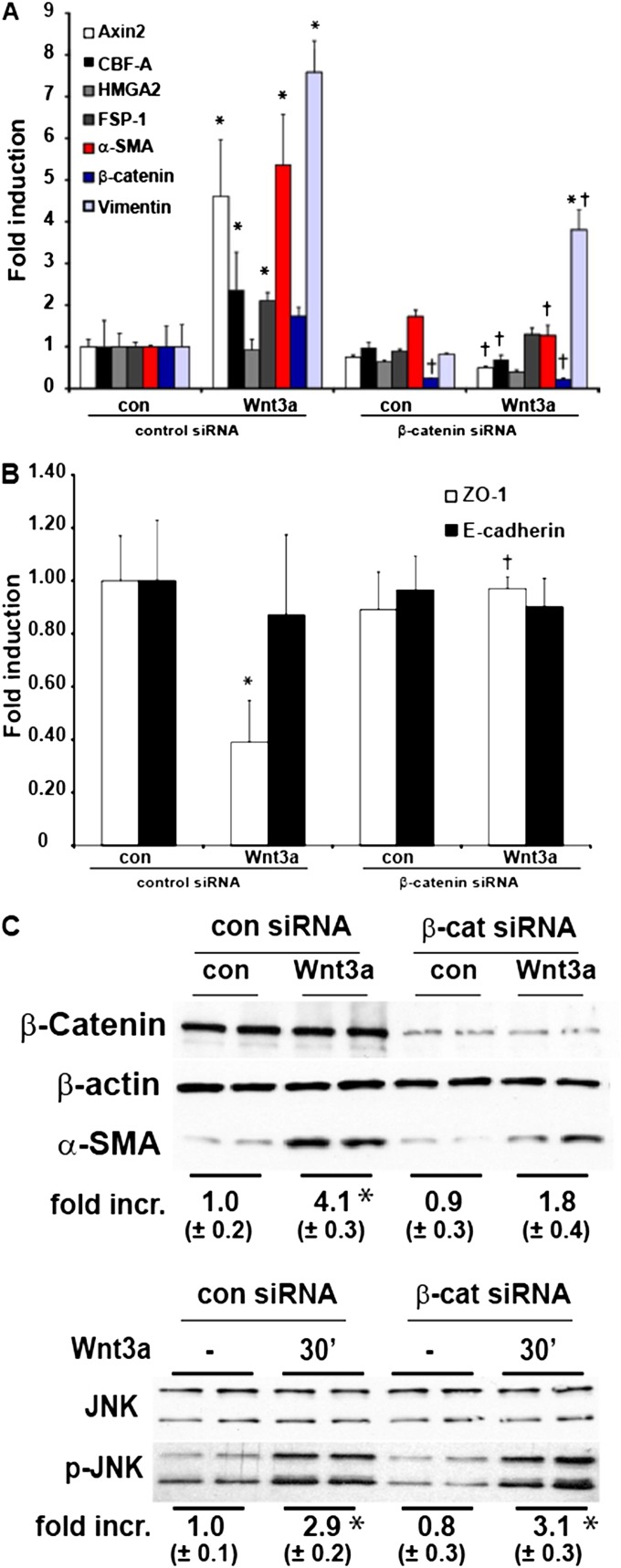Figure 5.
A causal role for β-catenin in the activation of EMT transcriptome genes in C10 lung epithelial cells after stimulation with Wnt3a. C10 cells were transfected with scrambled or β-catenin–specific siRNA before stimulation with Wnt3a (10 ng/ml). Cells were harvested for the analysis of EMT transcriptome genes (A) or epithelial genes (B) via real-time PCR analysis. Data were normalized to the housekeeping gene cyclophilin, and all results are expressed as fold change compared with scrambled siRNA–transfected control cells. *P < 0.05 (ANOVA), compared with scrambled-siRNA transfected controls (con). †P < 0.05 (ANOVA), compared with Wnt3a-treated siRNA control cells. (C, top) Cells were harvested, and total β-catenin (conformation of siRNA-mediated ablation), β-actin, and α-SMA content was assessed by Western blot analysis. Band intensity was determined and expressed as fold increase of α-SMA over β-actin. (C, bottom) Assessment of JNK phosphorylation in C10 cells transfected with scrambled or β-catenin–specific siRNA before stimulation with Wnt3a (10 ng/ml). Cells were harvested, and phospho-JNK and total JNK content was assessed by Western blot analysis. Band intensity was determined and expressed as fold increase of phospho-JNK over total JNK. * P < 0.05 (ANOVA), compared with control samples. Replicate lanes reflect independent samples.

